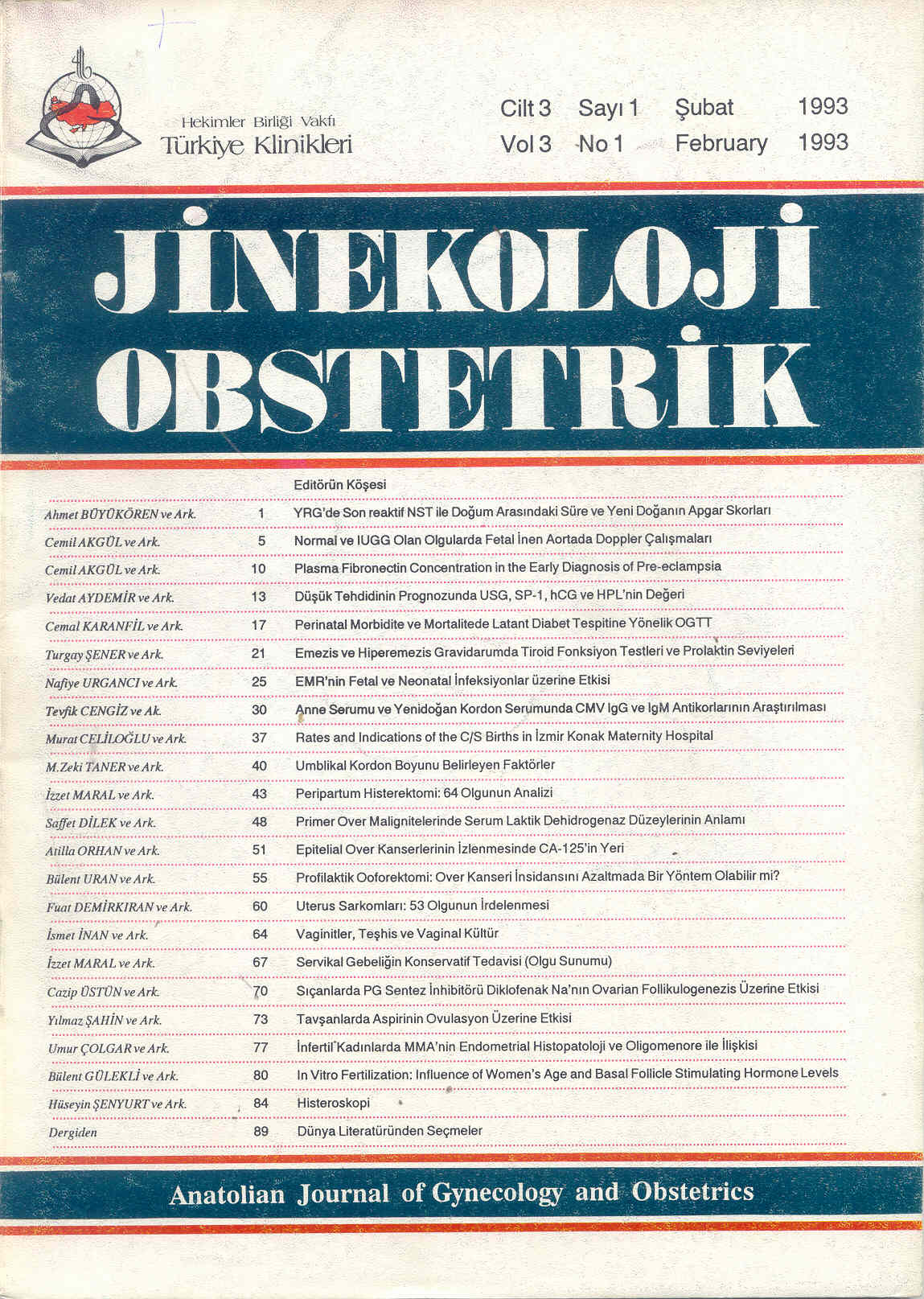Open Access
Peer Reviewed
ARTICLES
3685 Viewed1058 Downloaded
Oral Glucose Tolerance Test (OGTT) In The Detection Of Latent Diabetes In Perinatal Morbidity And Mortality
Perinatal Morbidite ve Mortalitede Latent Diabet Tespitine Yönelik Oral Glikoz Tolerans Testi (OGTT)
Turkiye Klinikleri J Gynecol Obst. 1993;3(1):17-20
Article Language: TR
Copyright Ⓒ 2025 by Türkiye Klinikleri. This is an open access article under the CC BY-NC-ND license (http://creativecommons.org/licenses/by-nc-nd/4.0/)
ÖZET
Makrozomik bebek doğuran 40 anne ile kontrol grubu olarak normal ağırlıkta doğum yapan 40 annede postnatal OGTT uyguladık. Önceden diabetli olduğu bilinmeyen bu hastalarda, makrozomik bebek doğuran grupta %40 oranında latent diabet tespit ettik. Kontrol grubunda ise latent diabetli hasta tespit edilmedi. Makrozomik bebek doğuranlarda, kontrol grubuna göre OGTT'de 1. ve 2. saat glisemi değerlerinde, istatistiksel olarak anlamlı bir yükselme saptadık (p<0.005). Bu hastalar çeşitli obstetrik özellikler yönünden de incelendi. Makrozomik bebek doğuran grupta travayın uzadığı ve müdahalede doğum gerektiği (%10) gözlendi.
Makrozomik bebek doğuran 40 anne ile kontrol grubu olarak normal ağırlıkta doğum yapan 40 annede postnatal OGTT uyguladık. Önceden diabetli olduğu bilinmeyen bu hastalarda, makrozomik bebek doğuran grupta %40 oranında latent diabet tespit ettik. Kontrol grubunda ise latent diabetli hasta tespit edilmedi. Makrozomik bebek doğuranlarda, kontrol grubuna göre OGTT'de 1. ve 2. saat glisemi değerlerinde, istatistiksel olarak anlamlı bir yükselme saptadık (p<0.005). Bu hastalar çeşitli obstetrik özellikler yönünden de incelendi. Makrozomik bebek doğuran grupta travayın uzadığı ve müdahalede doğum gerektiği (%10) gözlendi.
ANAHTAR KELİMELER: Makrozomi, OGTT
ABSTRACT
We have performed OGTT (Oral Glucose Tolerance Test). In the groups including the one with 40 mothers who have delivered macrosomic babies and the other one with the same number of mothers who have given birth to normal-weight babies. In those two groups, there was not any mother with pervious diabetes history. We have found that 40% of mothers in macrosomic groups had actually latent diabetes. We have determined that women given birth to macrosomic babies had statistically significant higher one-hour and two-hour glicemia values than the control group (p<0.005). Women it both groups were also scanned in terms of their obstetrical properties. In macrosomic group delivery was prolonged and medical intervation was necessary in 10% of those women.
We have performed OGTT (Oral Glucose Tolerance Test). In the groups including the one with 40 mothers who have delivered macrosomic babies and the other one with the same number of mothers who have given birth to normal-weight babies. In those two groups, there was not any mother with pervious diabetes history. We have found that 40% of mothers in macrosomic groups had actually latent diabetes. We have determined that women given birth to macrosomic babies had statistically significant higher one-hour and two-hour glicemia values than the control group (p<0.005). Women it both groups were also scanned in terms of their obstetrical properties. In macrosomic group delivery was prolonged and medical intervation was necessary in 10% of those women.
MENU
POPULAR ARTICLES
MOST DOWNLOADED ARTICLES





This journal is licensed under a Creative Commons Attribution-NonCommercial-NoDerivatives 4.0 International License.










